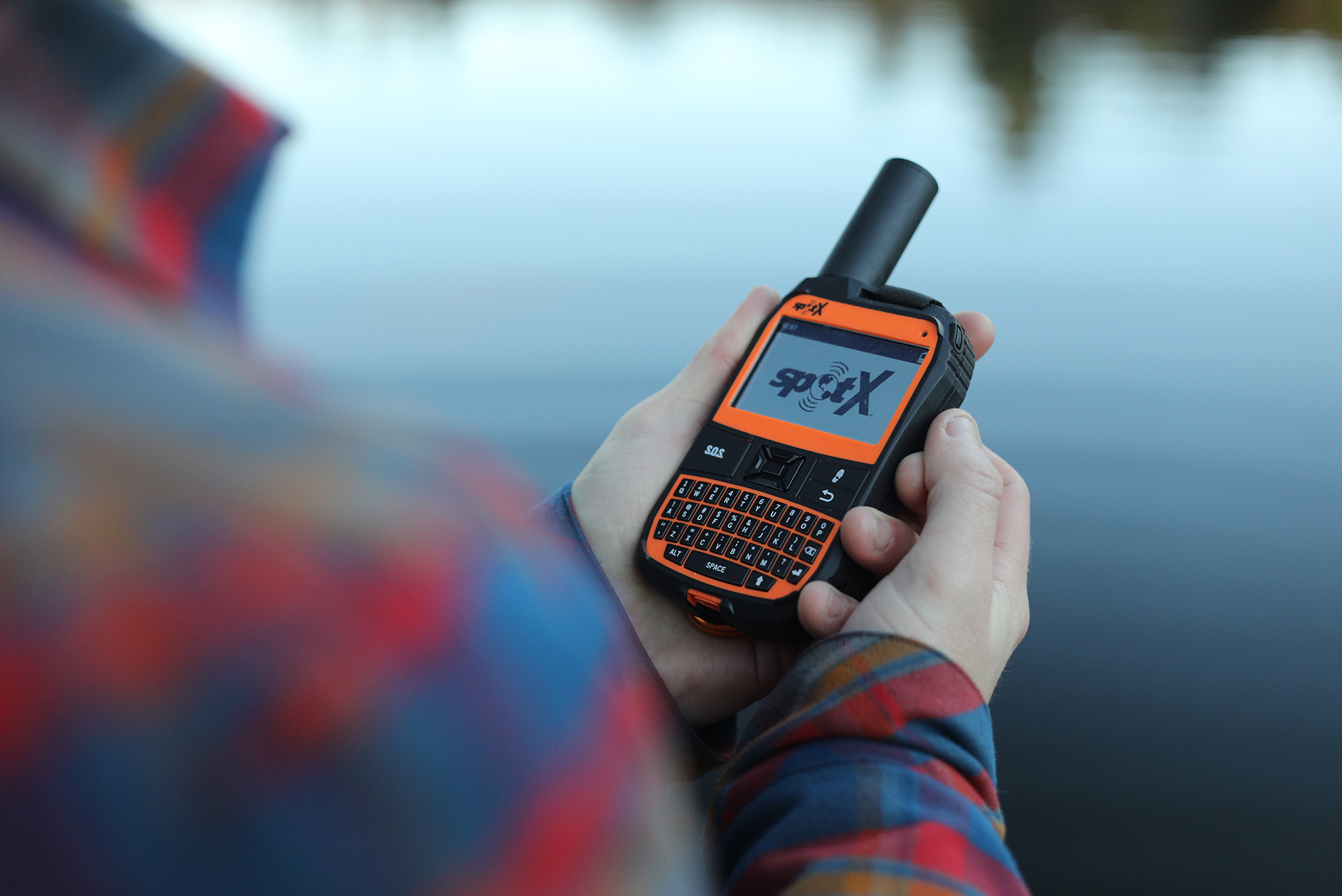In May of 2018, SPOT released its newest device called SPOT X which is their first venture into a two-way satellite messaging system. I had an opportunity to test this device while doing a 10-day canoe trip circumnavigating Algonquin Park on a route known as The Meanest Link.
On this challenging 424-kilometer route it was not only important to have this device for safety, but it allowed us to provide real-time updates to those who wanted to follow along online. SPOT is known for its tracking feature that allows users to set up a landing page for friends and family to follow their adventures in real-time.
Previous models, including the GEN 3, featured the ability to send custom messages you could set up before your trip, in addition to the important SOS button a paddler could press in the event of an emergency to initiate a rescue.

In using the previous GEN 3 model, I struggled to decide what to set the messages to. How do you protect yourself against every possible scenario with only two custom messages? This is one of our favorite things about the new SPOT X with two-way communication.
What we liked about the SPOT X:
SPOT X Feature Overview:
Messaging: Exchange 2-way messages with any cell phone number or email address from anywhere in the world
Tracking: Available on 2.5, 5, 10, 30- or 60-minute intervals to ping your current location.
Compass: Built-in compass with programmable waypoints to help you navigate
S.O.S.: Send and S.O.S. to the 24/7 search and rescue center
Social Integration: Link to social accounts to keep friends and family up-to-date
Check-in: Quickly and easily let everyone know you are okay.
Battery: Rechargeable Lithium Battery. 240 hours (10 days) in continuous 10-minute tracking mode
Durability: Impact, dust and water resistant
Display: 2.7” Backlit Display
Ports: Micro USB
The new SPOT X worked perfectly for our messaging needs. While on our trip, we shared daily text updates to keep family and friends informed on our distance traveled, number of portages and exciting experiences along the way. We added contacts to the device before we left and could send and receive messages from either text or email. We chose to send these directly to a friend who was publishing them to our Facebook page on our behalf.
You are currently able to send messages directly to a Twitter account but unfortunately, due to a Facebook update, the X cannot publish directly to your Facebook page. We are unsure if this is something that they will be able to remedy in the future.
The two-way messaging is ideal in circumstances where you require non-emergency assistance. Rather than being forced to use a catch-all message like in previous models, this would allow you to email your friends with the specific help you need. This will also ensure you are not rallying a helicopter for a non-life-threatening emergency.
The daily text updates were a nice addition to give context to the tracking link we had shared before leaving. The tracking link allows you to set up an interval for which the device will ping your location and send it to a page where people can follow online.
Intervals can ping at 2.5, 5, 10, 30 or 60-minute intervals and you can set your page to display all pings for up to seven days. We were happy with both of these functions and, of course, for the SOS functionality, which we were thankful not to have to use.
The interfaces on both the device and online are very user friendly and there is a lot of support available online including the ability to call their support team to ask questions directly.
We like the rechargeable battery and we recharged on the go with our portable battery power bank. We didn’t quite get 10 days of battery out of a single charge, but we were tracking at a high interval (every 10 minutes) which uses more battery. We were also sending out a high number of messages each day.
Improvements we would like to see:
Where we would like to see improvement is in the ability to resend messages. There were a few times that the interface would show an exclamation mark next to a sent message, indicating that the message had not been sent. This can be a challenge with satellite-based devices since you need an unobstructed view to the sky in order to successfully send a message.
In our situation, many of our campsites were in densely forested areas. Ideally SPOT would add an option to resend or alternatively allow you to copy and paste your last message so you can send it again, rather than retyping it a second time. As it turns out, all of our messages that had the exclamation mark had actually been delivered.
SPOT X Device and Plan Pricing:
SPOT X Device Cost: $249.99 USD | $359.90 CDN
SPOT X Plans:
SPOT offers a variety of different coverage packages. Similar to a cell phone, after buying the device there is a cost to receive service. If you are someone who will regularly need access to your device there are monthly plans between $12 and $30 per month (based on a 12-month contract) depending on how many messages you would like to send.
Alternatively, if you are someone who goes on one or two big trips per year that you would like to be covered on, SPOT offers flex packages. These packages cost between $15 and $40, again depending on how many messages you want to send, they allow you to purchase only a month of coverage at a time. Something that SPOT previously did not offer.
Photo credit: Michael Hewis








